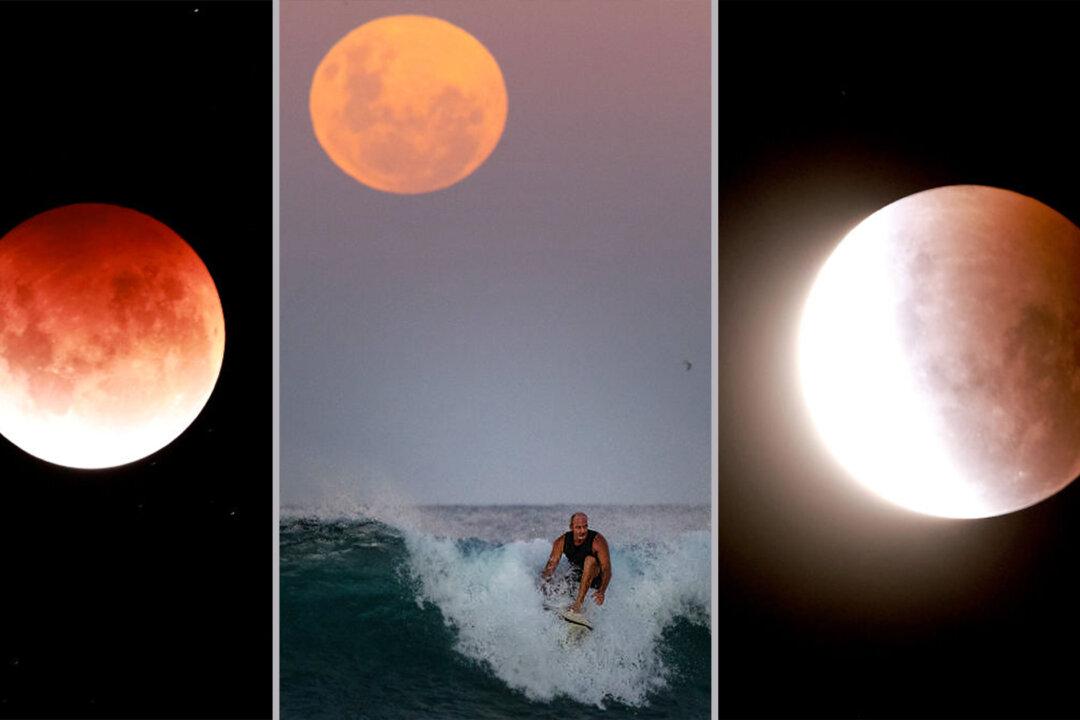Early Wednesday morning, both sides of the Pacific witnessed an extraordinary celestial sight of notable rarity, when the largest supermoon of 2021 coincided with a total lunar eclipse.
During the stellar spectacle, a deep reddish glow was cast upon the lunar disc due to an atmospheric effect—a phenomenon which gives rise to the moniker: Super Blood Moon.






